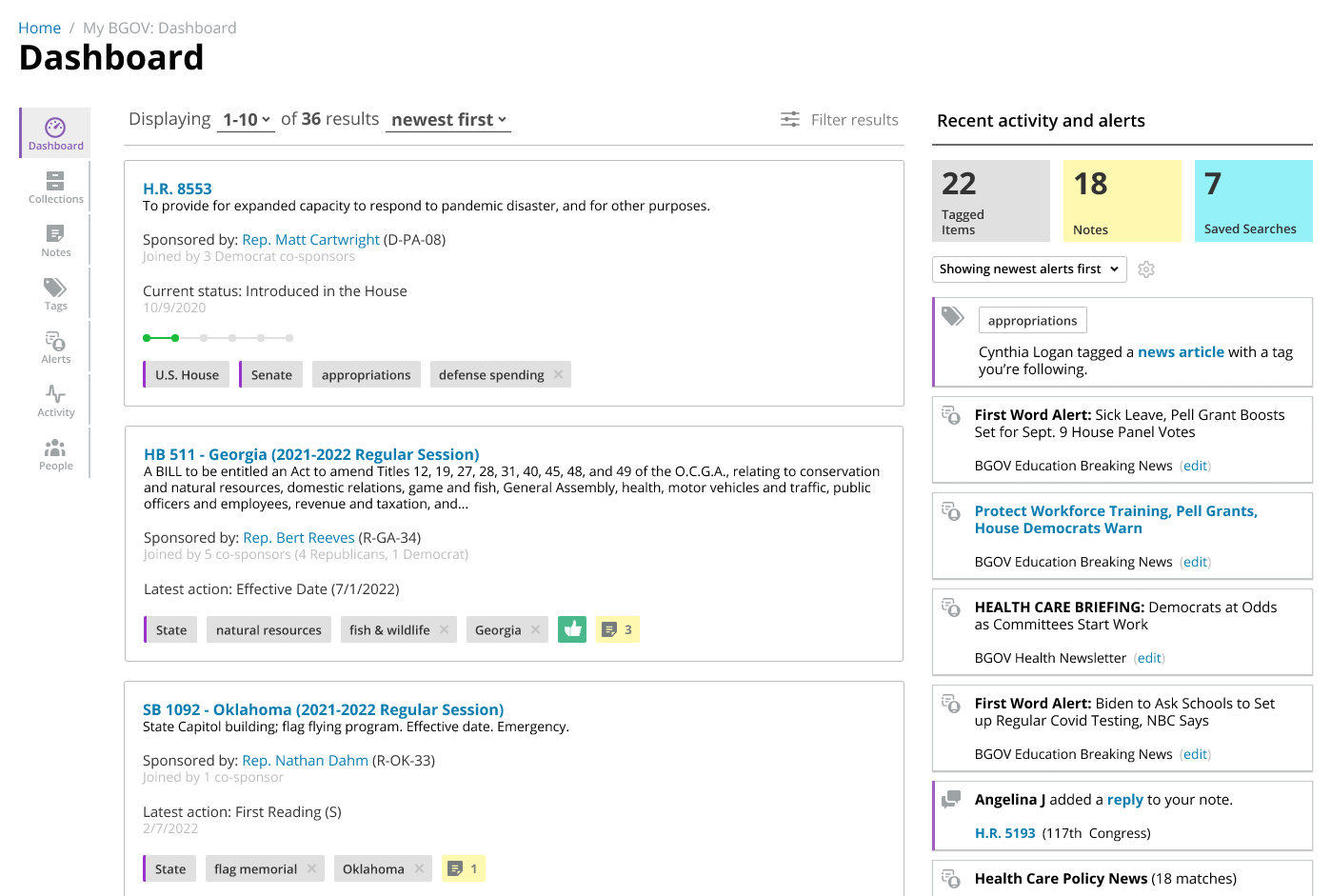Defining the problem
In the heart of Washington, D.C., where policy and politics intertwine, Bloomberg Government (BGOV) had long been a powerhouse of information for government affairs professionals. Its suite of tools for tracking legislation, monitoring news, and analyzing policy was unparalleled. Yet, as I stepped into my role, I quickly realized that BGOV was facing a critical challenge: its impressive array of features lacked cohesion, hindering the very collaboration it aimed to facilitate.
My journey began with a deep dive into the world of BGOV's users. I spoke with a number of government affairs professionals, observing their daily routines and listening to their frustrations. A pattern emerged: teams were cobbling together a patchwork of tools - email threads, shared documents, and endless spreadsheets - to stay coordinated. BGOV, despite its wealth of features, wasn't their go-to platform for teamwork.
This revelation was both a challenge and an opportunity. How could we transform BGOV from a collection of powerful but disparate tools into a unified, collaborative workspace?
Charting a New Course
Armed with insights from our users, I set out to reimagine BGOV. Our mission became clear: to create a platform where users could effortlessly define what matters to them, contextualize it, and share it with their team. This vision would guide us through the complexities of redesigning a well-established product.
The first hurdle was BGOV's search functionality. Users were struggling to find the information they needed across the platform's various features. I proposed a global search experience that would surface content from all of the typical information and data sources that users found extremely valuable -- Bloomberg News and Blomberg Government's exclusive coverage of current events; but would also make it simple to discover various user-curated content, from legislation tracking to news clippings and meeting notes. In doing so, I laid the framework to begin to add new types of user-generated content that would be easily discoverable from the outset.

Building the Connected Experience
As we delved deeper into the redesign, the concept of "My BGOV" emerged - a personalized dashboard that would serve as the heart of the user's experience. This wasn't just about rearranging existing features; it required a fundamental rethinking of how users interact with the platform.

We introduced a flexible tagging system, allowing users to organize content in ways that made sense for their unique workflows. The existing folder structure was reimagined as a flat architecture with smart tag groups, ensuring that long-time users wouldn't lose their carefully curated information.

Notes, once a standalone feature, were integrated throughout the platform. Users could now attach context to any piece of content, fostering a more collaborative environment. We even added the ability to convert notes into assignable tasks, bridging the gap between information and action.

Overcoming Resistance to Change
As with any significant redesign, we anticipated some resistance. The challenge was to introduce these new features without disrupting the workflows of existing users. We developed a careful migration strategy, ensuring that every piece of user data would find its place in the new system.
We also recognized that adoption would be gradual. Our metrics for success weren't just about immediate usage but about long-term shifts in behavior. We hypothesized that over time, users would begin to use My BGOV as their starting point, a hypothesis we planned to test by tracking referral patterns to content within the platform.
Launching into a New Era
As my time at Bloomberg drew to a close, we had successfully launched several key components of our vision: Shared Notes, a comprehensive tagging system, Policy Positions, and enhanced Alerts functionality. While the full suite of features was still in development, the foundation had been laid for a truly collaborative BGOV experience.
The journey to transform BGOV was more than a redesign; it was a reimagining of how government affairs professionals could work together in the digital age. By deeply understanding our users' needs and challenges, we were able to chart a course toward a more integrated, intuitive, and collaborative platform.
As I reflect on this project, I'm reminded of the power of user-centric design and the impact it can have on an entire industry. The story of BGOV's transformation is a testament to the idea that even the most complex systems can be improved when we focus on the people who use them every day.
Launch the prototype